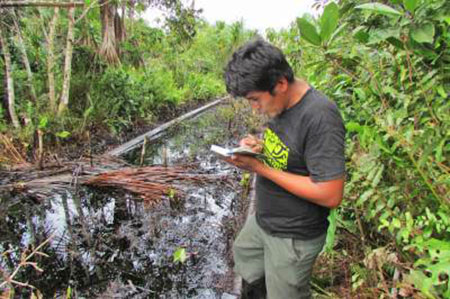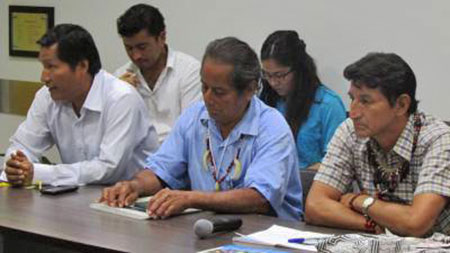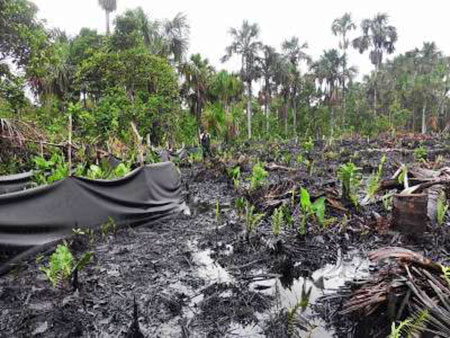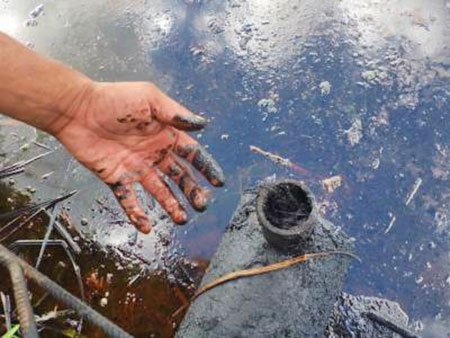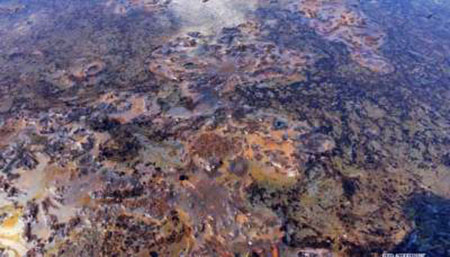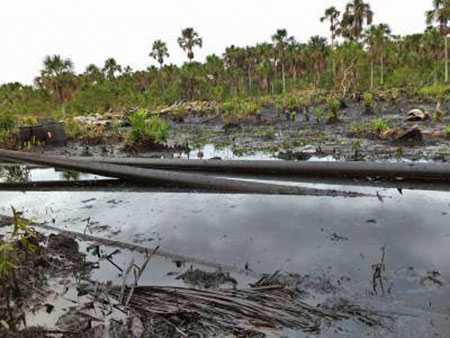|
Photo: Alianza Arkana/ACODECOSPAT
Last week Peruvian governmental authorities released test results that prove alarming levels of contamination in Peru's largest national reserve, Pacaya Samiria.
The park has been declared a
"wetland of international importance" by international treaty and is
part of Kukama Kukamilla indigenous territory. The contaminated
waters are the source of drinking water for numerous indigenous
communities along the Marañon River basin of the northern Peruvian
Amazon.
Soil contained hydrocarbons (TPH), as well as heavy metals such as lead, mercury, and arsenic; in some areas exceeding up to 95 times the permitted environmental quality standards for soil.
The water contaminants included,
The agencies reported several infractions by Pluspetrol, including
its failure to report 49 of the 60 sites where contaminants were
detected. Actions have been taken to undertake sanctions against the
company.
On January 22, 2014, the various authorities presented their
results to the public and a delegation of indigenous leaders who
traveled to Lima to receive them. Alianza Arkana accompanied the
delegation.
Delegation of Kukama leaders and AIDESEP president, Alberto Pizango, listen to results of environmental testing. Photo: Alianza Arkana
The Kukama (Cocama) leaders from the Marañon river basin representing two indigenous federations,
...reacted with grave concern for the health of their people.
Meanwhile, the contamination proven in the tests, and
reported to the indigenous leaders, directly affects the lives of
their people.
Alfonso Lopez Tejada further added,
Oil spill in Pacaya Samira reported by indigenous environmental monitors in December 2013. Photo: ACODECOSPAT
Oil companies operating in Peru are obligated to report accidents, oil spills and contamination to the respective authorities.
Additionally, when taking over the
concession 8X from its predecessor, Petroperu in 1996, Pluspetrol
legally assumed the damages left by the former. These damages were
identified in an environmental management instrument, called PAC,
which also elaborated a remediation plan for contaminated sites.
They
announced that they have initiated an administrative court process
to sanction Pluspetrol for the impacts the company has generated
outside of the concession 8X, including unauthorized deforestation
and infrastructure, introduction of non-native plants into the
reserve, and adverse impacts on the ecosystems.
Indigenous monitors record contamination within Pacaya Samira. Photo: ACODECOSPAT
The test results were presented at the Ministry of the Environment (MINAM), who coordinated the investigation efforts.
The government authorities involved in the investigations include,
Each
presented their findings.
There were points that exceeded 95, 47 or 22 times the permitted environmental quality standard values for soil.
In the 11 cases that had earlier been declared and are included in a PAC, meaning that they were supposed to be remediated, hydrocarbon values exceeded 38, 33 and 24 times environmental quality standards among others.
Moreover, the tests proved the presence of barium, cadmium and lead
exceeding environmental standards.
This is a lake within the Pacaya Samira Reserve contaminated with oil. Photo: ACODECOSPAT
ANA examined water and sediment samples from 30 points monitored in the interior of the National Reserve and along the Marañon and Samiria River.
They found contaminants such as arsenic, zinc, mercury, and others. Most prominent however is the presence of lead. 18 points proved the existence of lead and to an extent that exceeded 10 times environmental standards - a surprising level for the Marañon River, given its large size and water volume. The Marañon River is one of the largest rivers in Peru.
About 100 kilometers downriver from the Pacaya Samiria National Reserve and the monitored zone, it merges
with another large river of Peru, the Ucayali, to form the mighty
Amazon River.
Having found chrome, arsenic, aluminum and coliforms in the samples, DIGESA concluded that none of the
monitored communities has access to clean drinking water.
Oil pipes within Pacaya Samira violate environmental regulations. Photo: ACODECOSPAT
Water in the National Reserve is not exempt from contamination.
Within the Lot 8X, high
presence of chlorides and other derivatives from petroleum were
detected. Fluorene, chrysene and pyrene - aromatic hydrocarbons
present in the PAC lakes - have a horrifying impact on people's
health.
For
example, in the lake Clemente, which is a major fishing ground for
the nearby communities, arsenic in quantities above the permitted
values were found. Along the oil pipeline, derivatives of petroleum
were detected.
|

